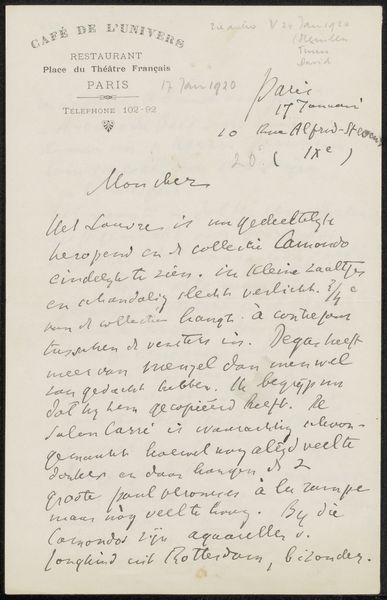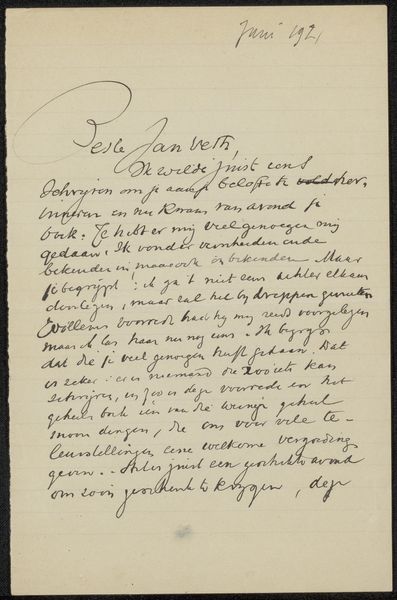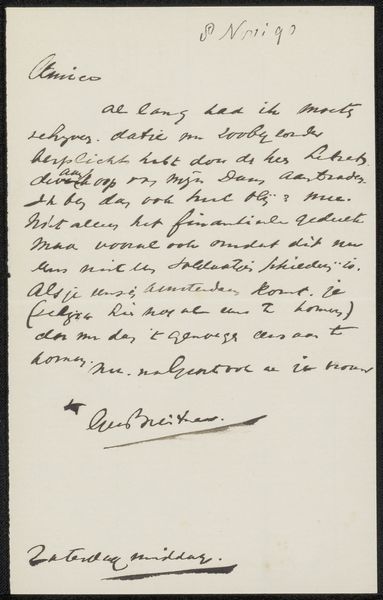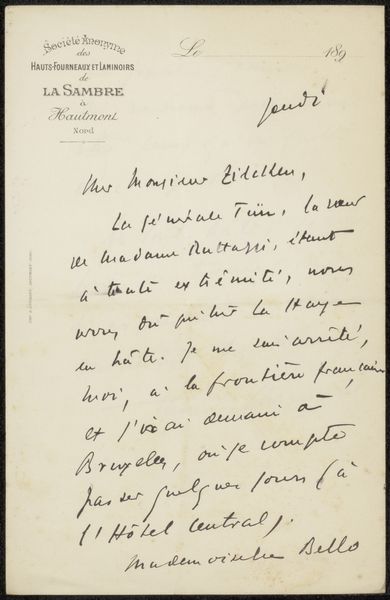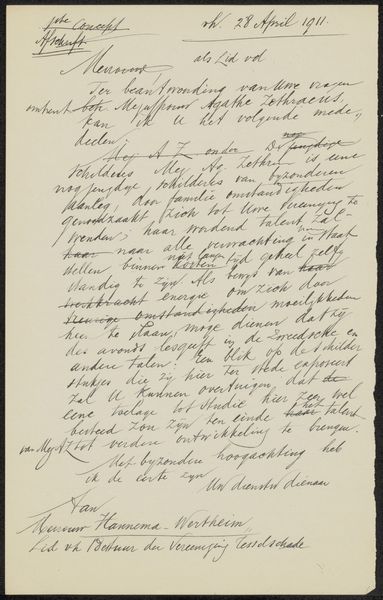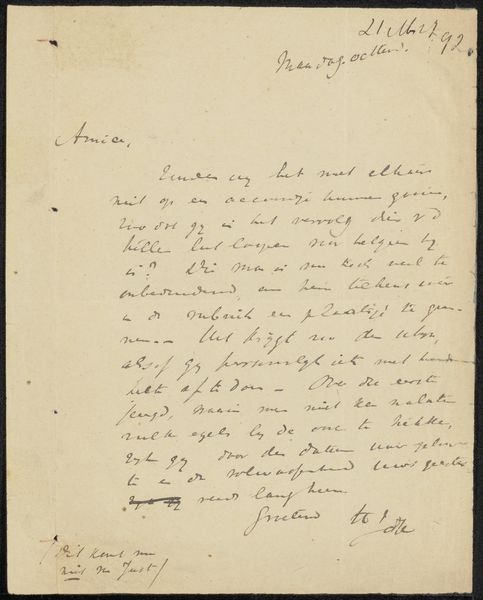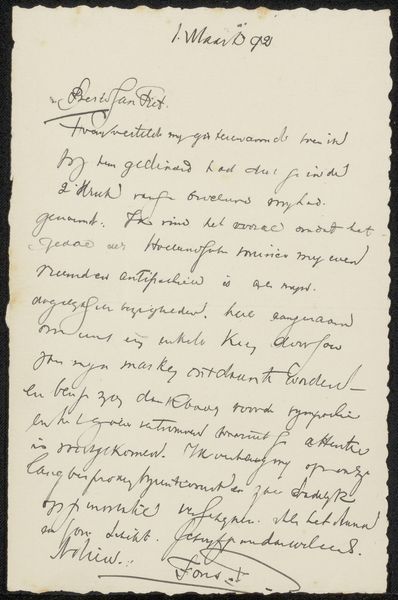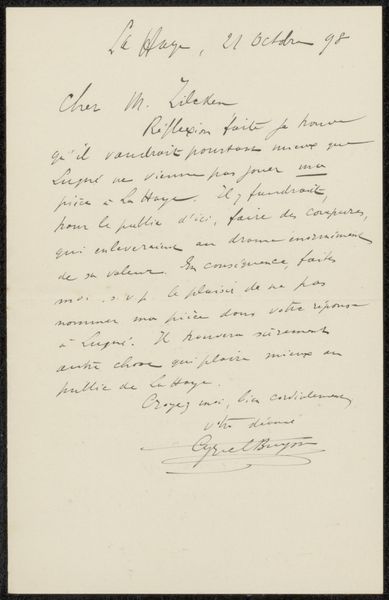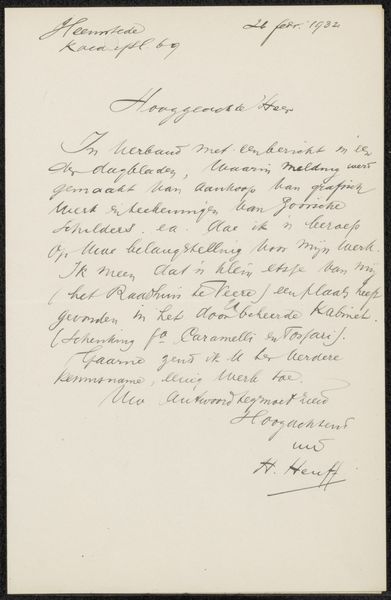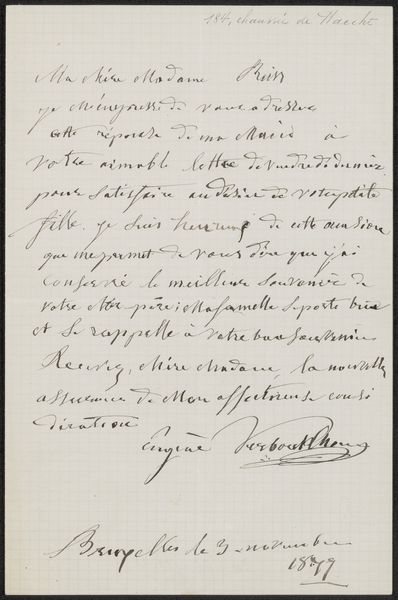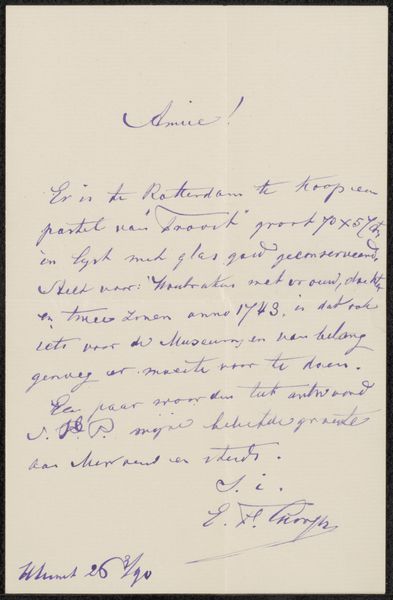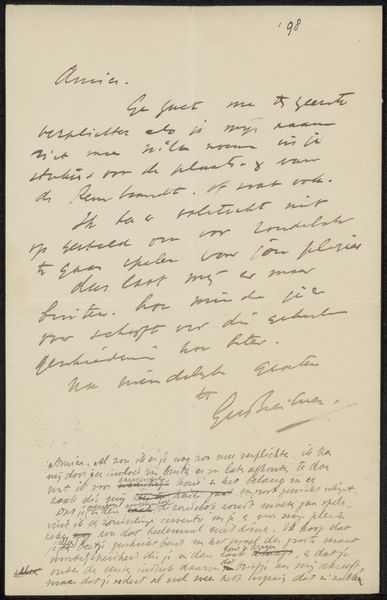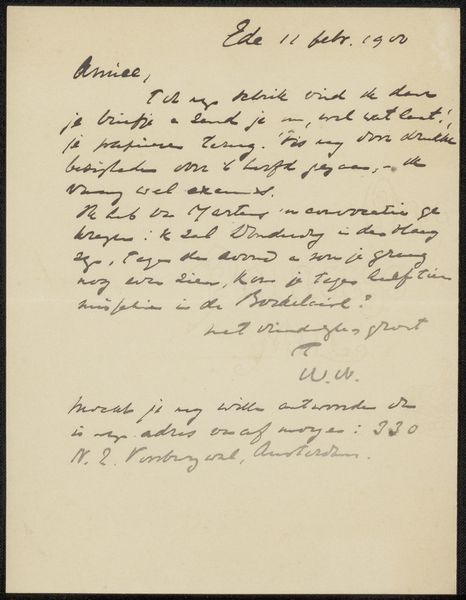
drawing, paper, ink, pen
#
drawing
#
comic strip sketch
#
pen drawing
#
pen sketch
#
hand drawn type
#
paper
#
personal sketchbook
#
ink
#
ink drawing experimentation
#
pen-ink sketch
#
pen work
#
sketchbook drawing
#
pen
#
sketchbook art
#
calligraphy
Copyright: Rijks Museum: Open Domain
Curator: We’re looking at "Brief aan Philip Zilcken" or "Letter to Philip Zilcken," possibly created between 1912 and 1923, a pen and ink drawing on paper by Arend Hijner. It showcases the artist’s expressive script and a glimpse into his correspondence. Editor: Ah, a handwritten letter! There’s a certain intimacy in seeing someone's actual penmanship, don’t you think? It’s…scribbly, passionate, slightly frantic. Gives you a sense of urgency, or maybe just a busy mind. Curator: The letter offers insight into the social networks within artistic communities of the time. We see references to exhibitions and scheduling challenges. The mention of “Bignell Scheveningen” positions the writer within specific exhibition circuits, revealing a negotiation of visibility and access within those circles. Editor: I see a mind at work, and also, maybe just a touch of…anxiety? Look at the way some words are crossed out, the compressed lines. This wasn't a leisurely activity. Letters, you know, pre-email. Were literally someone's thoughts delivered across space. You waited! Curator: Yes, letters took time. Hijner's choice of ink on paper—humble, immediate materials—speak to the accessibility of artmaking as a tool for communication, and networking but also reflection during the Modernist period. The act of handwriting itself connects to broader dialogues around craftsmanship. Editor: It feels raw, like a direct channel to Hijner’s thoughts. Like an unedited stream-of-consciousness poured out on paper. In a way it reveals the behind-the-scenes, the less polished aspects of being an artist which are always a little stressful, I suspect. Curator: Exactly. There is something quite vulnerable in exposing your inner machinations in this format. The drawing encourages us to reflect upon the ways we navigate professional relationships in art—who we write to, what we ask for, how we frame those asks. Editor: Absolutely, so beyond being just an artifact of correspondence, I see the beauty here being more akin to say a musical score – a visualization of a thinking and feeling at work that happens to leave these material residues behind. It's beautiful. Curator: Indeed. "Brief aan Philip Zilcken" acts as a bridge, connecting us not only to an historical artistic network, but also to ongoing dialogues around access, anxiety, and human connection. Editor: A little window into a life! Proof that the daily struggle of being an artist isn't new. Thanks for letting me peek!
Comments
No comments
Be the first to comment and join the conversation on the ultimate creative platform.
